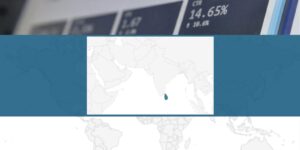The Governor of Bank Negara (BNM) recently gave a speech at the Takaful Annual Dinner and Awards 2018 called “Takaful industry at crossroads: A critical examination”. He discussed a wide range of issues in quite an open and honest manner. This is a good thing as we must look to ourselves to improve. One way to counter many of the issues highlighted by the Governor is to clear the way for discretionary Takaful plans.
The Governor mentions that the industry has come a long way in the last 20 years, but there remain three main issues: sustaining the growth of Takaful to meet targets set by BNM as Takaful is still well below its potential, Takaful operators reaching critical size in the wake of increasing competition not only from within the industry but also from disruptions and making the value proposition of Takaful more apparent. From these comments, it is clear that new models and products are needed where the beauty (and thus value proposition) of Takaful shines, not just as window dressing but as products and models which will drive growth to reach critical size.
The Governor went on to mention that the Takaful industry needs to overcome the perception of simply imitating conventional insurance, which again points to the need for new and innovative products and models.
Several priorities were then given:
- Takaful should be seen as helping protect people and businesses. A number of examples were given, in particular the need to cover the underserved mass market, B40.
- Takaful needs conduct itself in ways that alleviates the hardships of the participants, not make things worse. This means superior customer service and effective use of technology.
- Takaful needs to have the right people with the right skills. There needs to be a consideration of a total reimagination of the Takaful model.
The Governor as part of these examples mentions mutual Takaful. In a sense, Takaful is synonymous with mutuality, so let me define mutual Takaful more precisely to be discretionary Takaful. Discretionary Takaful can be defined as a model where a group of participants get together to assist each other, where benefits are paid on a best efforts basis. If the fund is not able to pay benefits, the benefit levels are reduced or the payment is delayed. This structure is currently used in Christian insurance, such as the Samaritan Ministries in the United States as well as conventional discretionary mutual insurers. This structure is not for everyone obviously. The bread and butter products for Takaful currently are Mortgage Reducing Term Takaful on the family side and Motor and Fire Takaful on the general side. These products would not be well suited to a structure where benefits are not guaranteed. The initial market for such a structure is where there is a natural affinity, such as an association or industry group. This structure is currently already widely used in Malaysia, albeit informally, with the death protection provided by many mosques on a non-guaranteed basis.
This type of product will appeal to the mass market as it is simply extending the types of coverage which is already well understood through the mosque and other informal programs and can be structured to be very simple to understand and administer. This type of model is not simply window dressing but is a complete rethink of the Takaful model. It is in line with innovative product structures elsewhere and it directly targets the B40 mass market.
This model type will not guarantee benefits and the operator will charge a wakalah fee for its role in managing the fund. The operator will not share in any surplus as the surplus will completely belong to the group or association joining for the coverage. Any surplus will be kept in the fund to lower future contributions, be used to cover additional benefits or the hard-core poor within the group or community or be used for other benefits for the group such as education assistance.
As this model is a complete re-imagination of the Takaful model, the regulatory requirements such as solvency also need to be refined. An operator requires a reasonable return on capital to its shareholders. As this model is significantly lower risk to the operator, the capital requirement should also be lower. This will ensure a reasonable return on capital is possible with a very modest wakalah fee, creating a win win situation for all. If the Takaful industry can embrace this type of model to push Takaful forward into new untapped markets, BNM also needs to do its part by making regulations conducive to this type of model.

